Visit Creek Street in Ketchikan
This blog post contains affiliate links. If you make a purchase using one of these links, I may receive compensation at no extra cost to you. Read my disclaimer for more information.
If your cruise ship pulls into the port of Ketchikan and you’re wondering what you should do, then make sure to visit Creek Street in Ketchikan.
What started as a summer fishing camp for the local people, Ketchikan is now the sixth most populous city in Alaska with a whopping 8200 residents. Some of the first residents were often found on Creek Street and they helped shape the city and the southeastern part of Alaska.
Why is Ketchikan and Creek Street Important?
The area around Ketchikan was a prime fishing zone during the peak fishing seasons every season. Natives returned year after year and then Mike Martin traveled to the area in 1885 on a scouting trip for a cannery based in Oregon.
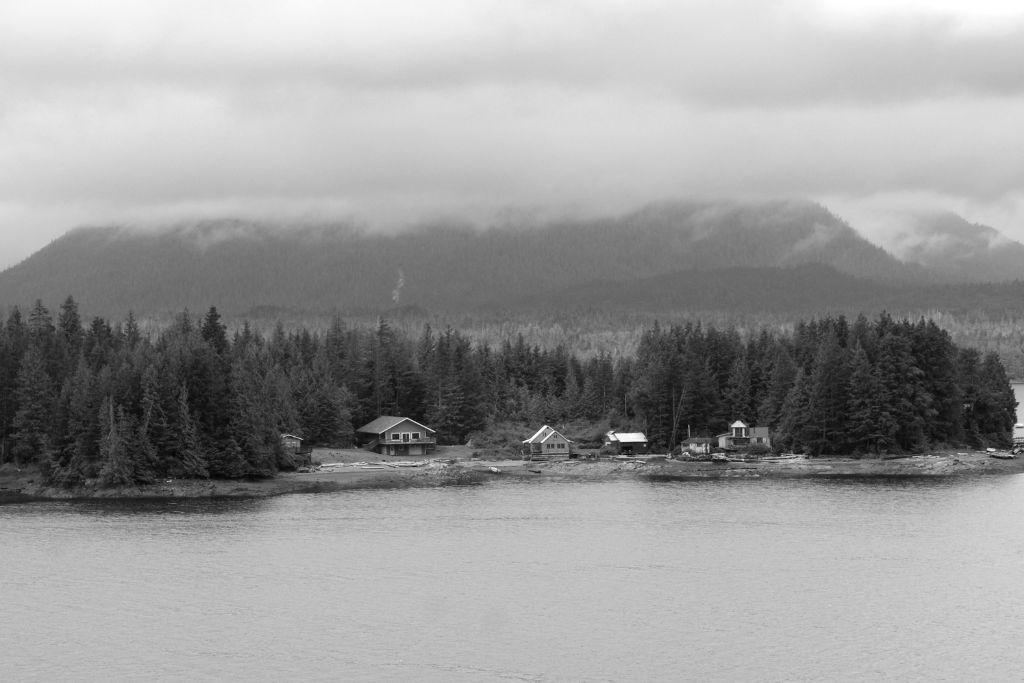
This is a very brief history of how the area grew, but it started a long and continual history of Ketchikan being a source of harvesting fish and getting it to the rest of the hungry world. Up until just after World War II, canneries were built and competed with each other vigorously to capture the most fish to preserve. Due to this fishing industry, Ketchikan earned the title of “Salmon Capital of the World.”
The Growth of the Area
Once the canning business started full force, people flocked north to Alaska for jobs and a new life. This was especially true during the Gold Rush boom starting in 1898. The people flocking north were predominantly men, and where men are found, the women will follow.
Some women traveled to this opportunistic new land for a fresh start in life by looking for a husband. The ratio of men to women was definitely leaning toward the women’s advantage. If you’re looking for a big pool to choose from then Alaska is your fishing grounds.
Others decided they would start new businesses catering specifically to the men in the area, especially those not looking for marriage. The area of Creek Street soon became known as the red-light district of town with several brothels and bars servicing the needs of the men in the area.
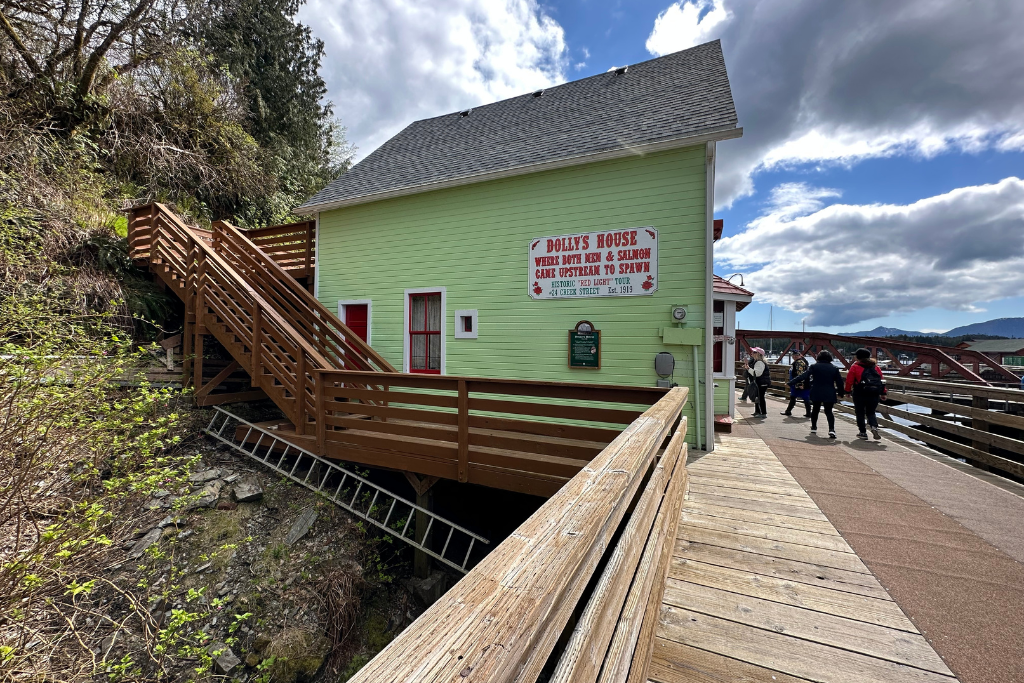
Creek Street was the place to go to let off steam after a hard day’s work. Whether the men were looking for a drink and music, or to spend time with a woman, Creek Street was the place to go.
How to Get to Ketchikan and Creek Street
Sea
Since Ketchikan is located on Revillagigedo Island, most people arrive by sea. There are multiple ways to arrive in Ketchikan by water.
Cruise Ship
Almost all of the cruise ships sailing the Inside Passage stop at Ketchikan. Tourism plays a huge part in the economy of the area and the cruise ships are responsible for bringing most of it in.
Alaska Marine Highway System
Alaska is a state that consists of many islands not connected to the mainland. These many islands depend on ferries to transport people from one location to another. The Alaska Marine Highway System is over 3500 miles of ferry routes bringing people, supplies, and vehicles to 35 coastal communities year round. Click here to check out their vessels and current schedules.
Private Ships
If you have access to your own ship or travel with someone else by boat, Ketchikan has ample moorings for private ships of all sizes. Marine services are also available to help with any possible needs while in port.
Plane
Alaska Airlines and Delta Airlines fly into Ketchikan International Airport on Gravina Island directly across from the downtown area.
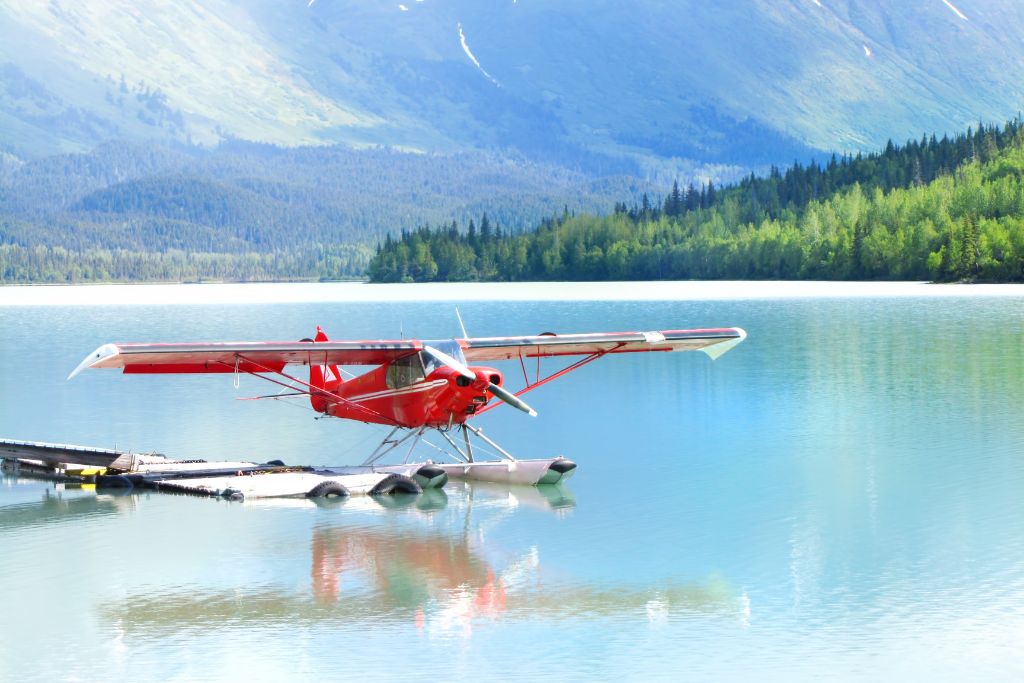
Many air taxi services will gladly bring you from other Alaskan locations, either by small plane or seaplane.
Airport Ferry
Ketchikan International Airport is a short 5 minute ferry ride from town. The charge for an adult is $6.00 one-way, while a car is $7.00. Ferries travel from the airport to town on the half hour and return to the airport on the quarter hour. Please check the schedule here for more details.
Drive
While you can drive around the island where Ketchikan is located, it is not connected to the road system in Alaska. The roads on the island total about 32 miles. You can drive once in Ketchikan, but almost everyone arrives by sea or air. Of course, if you arrive on the ferry, you can bring your own vehicle with you.
The History of Creek Street
Creek Street is just one small part of the city of Ketchikan. But it may be one with the most colorful history that has endured for more than a century. Read on to learn more about this intriguing area.
Why is it called Creek Street?
It is called Creek Street because the houses are on stilts that straddle the Ketchikan Creek. The downtown area of Ketchikan is very narrow and backed by a steep slope rising up on the far side of the creek. Buildings consisting mostly of brothels and bars were constructed along a boardwalk on the immediate outskirts of the city area.

Many claim a 1903 city ordinance pushed all the bawdy houses to Creek Street because they were banned in the city center. From 1903 until 1954, these businesses operated outside of the proper city center and were in the stilted houses of Creek Street straddling the Ketchikan Creek.
Flourishing Businesses on Creek Street
As you stroll along Creek Street’s charming boardwalk and browse through the shops, think back a few generations to the heyday of this former red-light district. The wooden houses once contained thriving businesses catering to the needs of the local men. They came here to seek out entertainment, from music and drink to women and companionship.
The working ladies that ran these establishments were unique characters that helped shape the city and this part of Alaska. Even though they were called “soiled doves” or “ladies of the line”, they played an important part in the history of Ketchikan and surrounding areas.
In general, there aren’t too many details about the women who worked here, except for a few. Due to their chosen career in the “oldest profession”, most women would not want their lives recorded for others to learn about.
The Enterprising Women of Creek Street in Ketchikan
Yet these women were strong, adventurous, entrepreneurs and they were looking for a way to survive in the frontier that was Alaska. Not only did they run successful businesses, these women were independent during a time in our history where women were considered second-class citizens without much say.
Shutting down the Creek Street businesses did not stop prostitution in Ketchikan, but it did change a way of life on Creek Street. Some women left the area and started businesses elsewhere. Others just operated under the radar, working when they had the chance without trying to attract much attention to their actions. Let’s learn a little more about the women who worked and lived on Creek Street in Ketchikan.
Beatrice Greene
Beatrice Greene owned her own property and continued to live on Creek Street until her death. She actually maintained her entrepreneurial business until some time in the 1960s. Precautions had to be taken to avoid the authorities, but business continued for her for many years. She was located at #20 Creek Street.
Annie Watkins
She was an African American woman from Arkansas and she owned and lived in #4 Creek Street. Annie was a staunch supporter of her female neighbors and often fought for their rights to the best of her ability. She stayed in her home until her death in 1966 and often “worked” when she was able to get away with it.
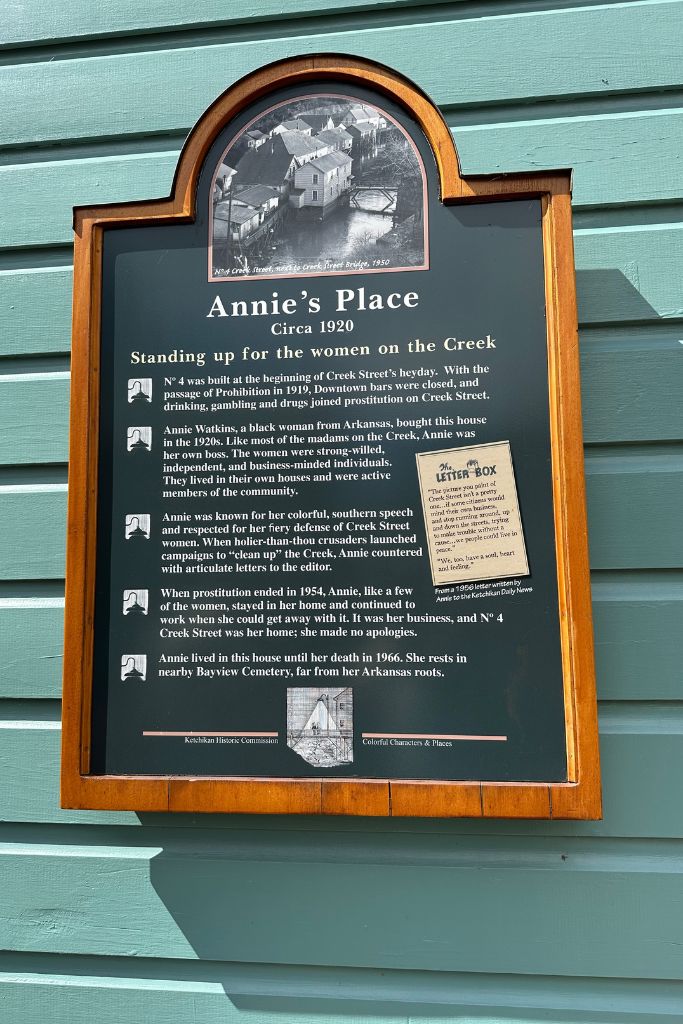
“Black Mary” Thomas
Alaska Territory’s only registered brothel was The Star House and it is the largest building on Creek Street in Ketchikan. It served this business purpose until prostitution was shut down on the Creek in 1954.
“Black Mary” Thomas owned the house and several girls worked for her throughout the years. One of her “working girls” was Dolly Arthur, who later became one of the most well-known of Ketchikan’s ladies.
In 1924, Thelma Baker purchased the business from “Black Mary” and it continued as a house of prostitution until the Creek Street shut down in 1954. The Star House continued as one of the most-visited buildings in the Ketchikan area, attracting the working men to the working women living there.
Today, The Star House is a symbol representing the hard-working, enterprising women who turned Creek Street in Ketchikan into a thriving red-light district.
Thelma Baker Graham
Thelma bought the Star House Dance Hall at #5 from Black Mary Thomas and continued the lively action it brought. She purchased the dance hall in 1924 and lived there until 1972 when she passed away.
Dolly Arthur
Dolly started her working career in Vancouver and then Juneau. When she moved up to Ketchikan, she started at the Star House Dance Hall, working as one of “the girls” with Black Mary Thomas. She eventually opened her own business down the street at #19.
Dolly Arthur, whose name at birth was Thelma Copeland, was one of Creek Street’s longest residents. She came to Creek Street in Ketchikan in 1919 and lived there for 54 years, only leaving when her deteriorating health required a move to a nursing facility.
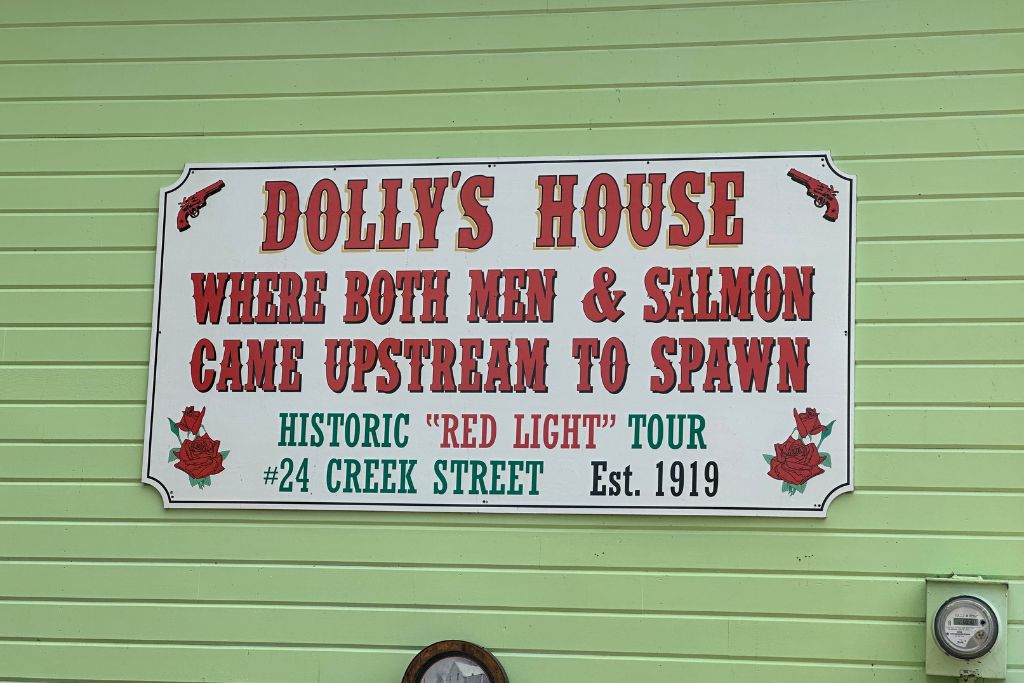
Today, a museum at her house commemorates her life and those of other women who played important roles in Creek Street’s 50 years of notoriety as the most infamous red light district in the Territory of Alaska.
As each of these women passed away, the history of Creek Street faded away, along with the deterioration of the properties they cared for.
Things to Do and See on Creek Street
Current Businesses on Creek Street
There are several places to shop for art or find a place to stay on Creek Street. It’s also just a wonderful place to window shop and stroll along the boardwalk.
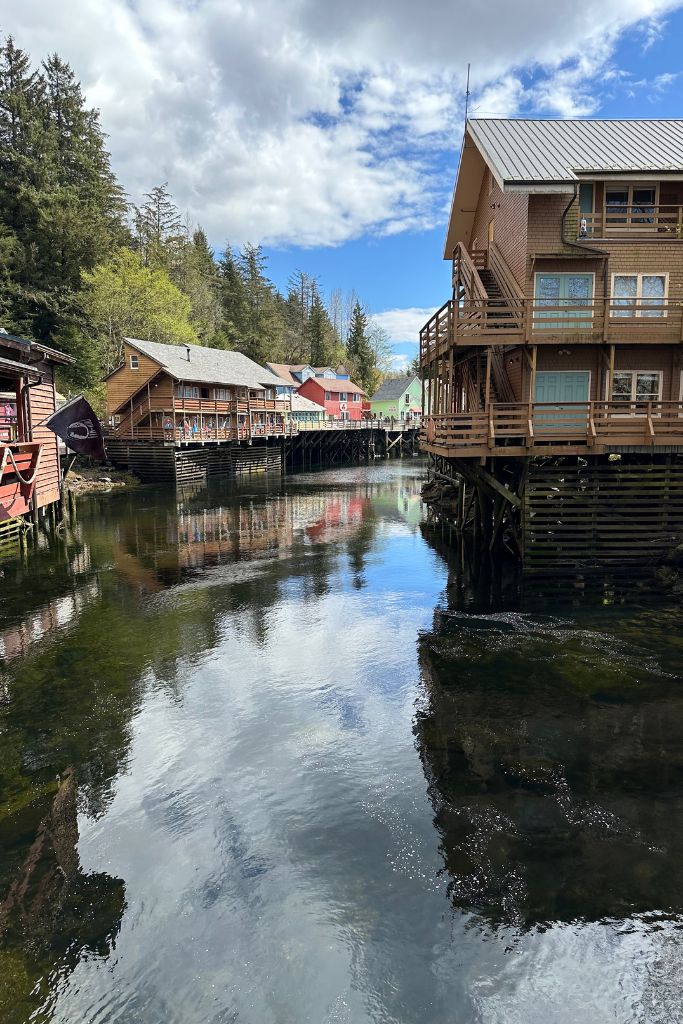
Click here for the list of current businesses to visit on Creek Street.
As you walk through each building and shop through the modern items on display, keep in mind the history of the building. Be reminded of the women who kept these buildings standing and helped to shape the territory that would become the state of Alaska.
Married Men’s Trail
Most of the local residents lived above the Ketchikan Creek on the steep hill overlooking the city. There’s a pathway that leads down to the Creek, and currently a wooden staircase to make traveling easier. This was formerly a muddy path along the Creek and up the hill known as Married Men’s Trail.
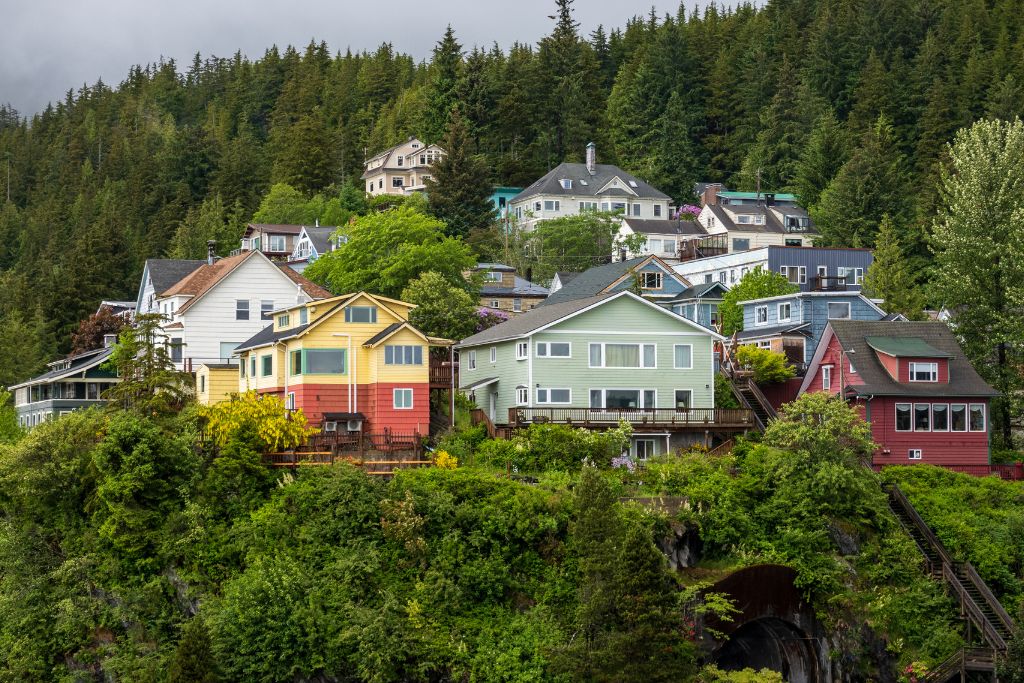
The local men used this pathway to access the back doors of the businesses they frequented along Creek Street. This was a discreet way to visit their favorite red-light district, or as a quick escape if a raid happened while they were visiting. Since many of the patrons were married men, the name makes perfect sense.
Salmon Ladder
Although our timing was off and we didn’t experience the salmon traveling upstream, the Ketchikan Creek is a perfect place to view this annual event. The salmon are so thick in the water that it almost appears black with salmon.
This occurs from mid-July through to mid-September. Creek Street Footbridge is a perfect viewing point to watch the amazing struggle of the salmon traveling upstream to spawn and is very close to downtown.
Is it Easy to Get to Creek Street from the Ship?
Even though I was walking with a cane for part of this cruise, the walk from the cruise ship dock to Creek Street was quick and easy. I don’t walk fast at all, and it took us less than 10 minutes to get there. Check out the map below to see how close it actually is.
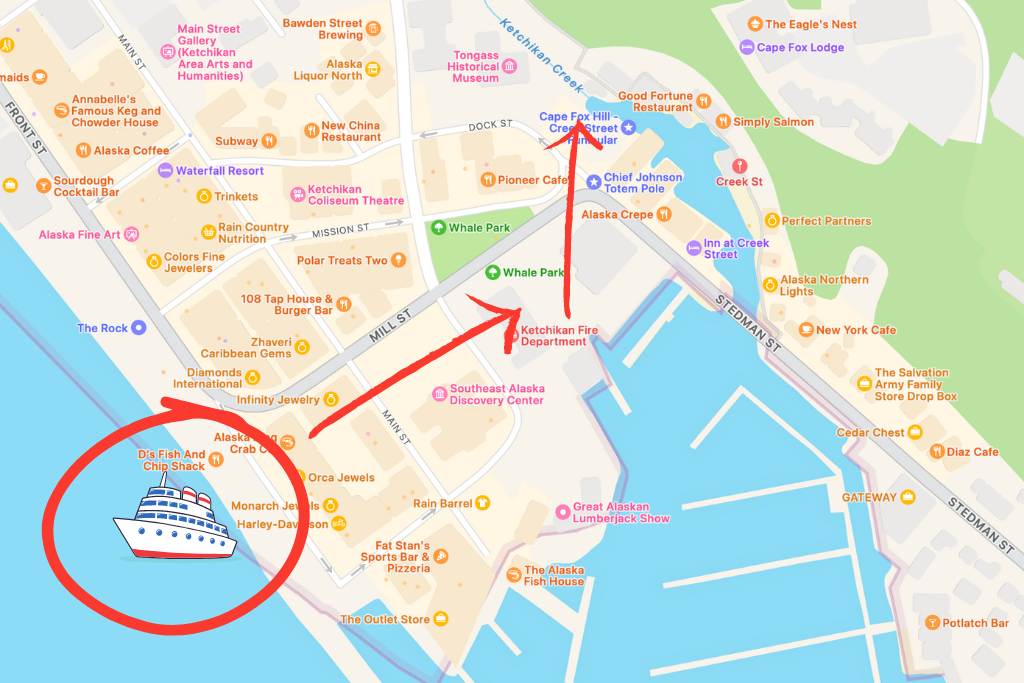
There are some shops located along the dock area that are quite close to where you disembark. I spotted a bubble tea shack and had to try it. A very wise decision for sure!
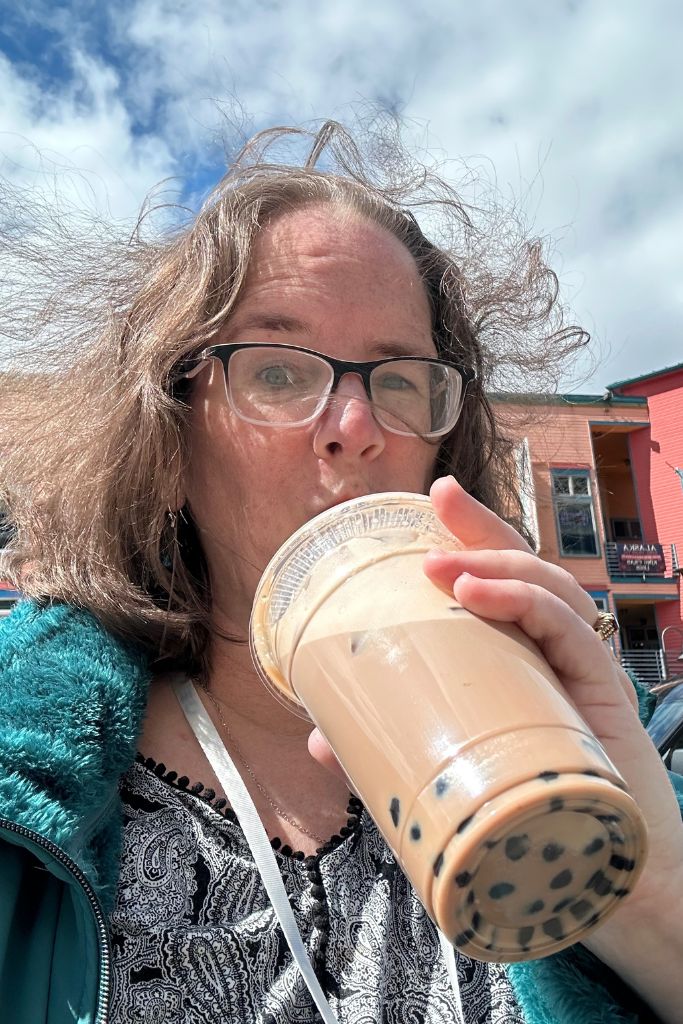
Other Things to Do Nearby
Shopping for Jewelry
With the rise in popularity of cruising to Alaska along the Inside Passage came the rise in the number of jewelry shops in cruise ports. The reasoning believes cruisers have disposable income and many people love to take home a small souvenir of their trip. What better way to do this than to buy a lovely piece of jewelry?
You’ll have many jewelry shops to choose from and can find some original pieces that are worth the price. It’s also a wonderful window shopping activity as you stroll the shops.
Saxman Totem Park
Ketchikan is called the “Totem Capital of the World” and you can view many totem poles in one place at Saxman Park. My mother and I booked an excursion from our ship to go there.
We learned so much from our guide, who was a Tlingit native of the Raven clan. His storytelling skills were spellbinding. The totems tell a pictorial story of the families who built them and demonstrated the clan’s wealth and importance to their people.
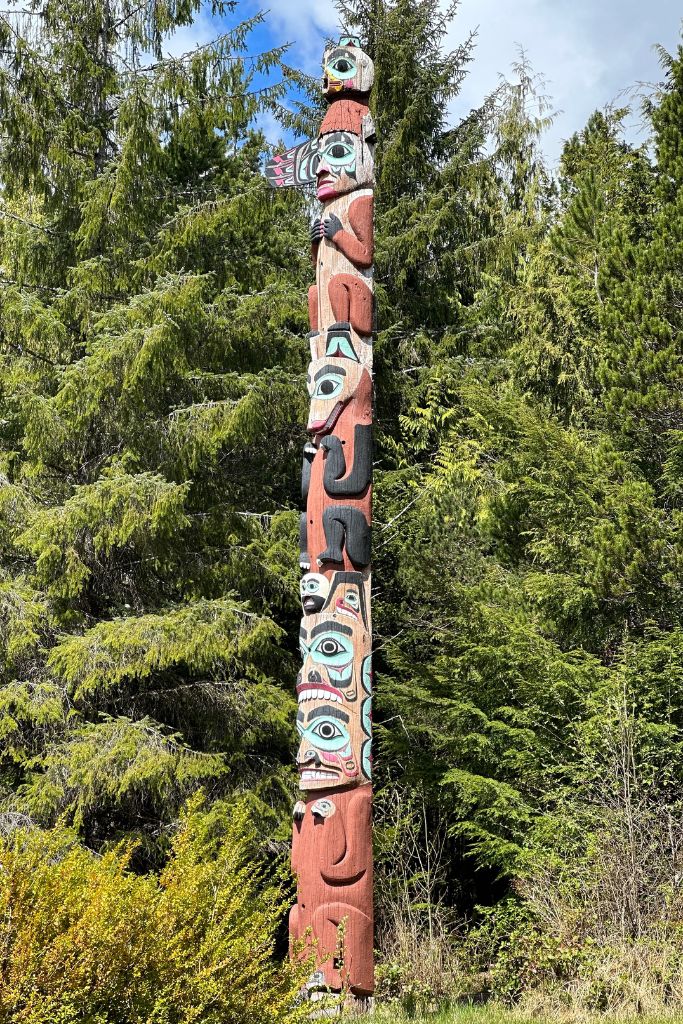
There is a totem carving shop located in the park but it was unfortunately closed when we were visiting. Saxman Totem Park is about 2 miles south of Ketchikan and is worth checking out to view a collection of intricately carved totems.
Tongass National Park
If you’re going to visit a National Park, then you might as well start with the largest. Tongass National Park covers most of southeastern Alaska and surrounds the Inside Passage.
Tongass National Park offers a variety of outdoor activities to experience.
- camping
- fishing
- hiking
- riding a dog-sled
- bear or eagle viewings
Click this link to learn more about Tongass National Park and how you can experience more of the natural beauty of Alaska.
Misty Fjords National Monument
This area is about 40 miles east of Ketchikan and consists of over 2 million acres of wilderness lands administered by the U.S. Forest Service. Adventurers who reach the Misty Fjords National Monument get there by boat or small planes. They arrive for hiking or kayaking in the area, which is part of the Tongass National Forest.
Fun Activities Around Ketchikan (with Links!) Alaska Native Cultural Immersion Experience and Ketchikan Tour 3 Hour Rainforest Walk and Totem Park Snorkel Alaska Wilderness Zodiac Quest Ketchikan Shore Excursion: Rainforest Canopy Ropes and Zipline Adventure Park Ketchikan Shore Excursion: Eagle Island Sea Kayaking Low Tide Excursion & Beach Bonfire (w/ Totem Park Stop)
Hiking In and Around Ketchikan
From kid-friendly trails to easy trails, and even some that are much more advanced, Ketchikan has plenty of variety to keep your hiking exciting. Check out this link with a list of 27 scenic trails in the area.
Black Bears at Traitor’s Cove
During salmon season, the black bears want to see salmon as much as you do. Travel with a group to see both salmon and bears in one shot! Located about 30 miles north of Ketchikan, travel by boat to the area in about an hour. The ride takes you along the river floating through rainforest with mountains rising high above. A well-informed captain, who acts as your guide, will direct you safely to the viewing point and share facts about the local wildlife and plant life.

Great Alaskan Lumberjack Show
Watch teams of two lumberjacks take on each other in a series of competitive events. In this hour long show, cheer for your favorite team as they use all their strength and skills to win. The Great Lumberjack Show is located at 420 Spruce Mill Way just a block from the cruise ship docks.
You can also listen for the cheering and rowdy screaming as the audience joins in on the competitive spirit. We heard them from 2 blocks away as we walked back from town. Tickets can be purchased on the ship, or by checking out their website here.
Sampling Local Seafood
When you are in an area that is called the “Salmon Capital of the World” then it is assumed that the salmon and other seafood are amazing. And that assumption would be correct.
In addition to salmon, the area is also known for King crab and halibut. They also serve up shrimp, scallops, cod, pollock, sole, and rockfish. Something is available here for most seafood lovers.
FAQ About Ketchikan
Where is Ketchikan?
Ketchikan is located at the southern tip of the Inside Passage. This area connects the Inside Passage with Puget Sound. Being in the southernmost point of the Inside Passage, Ketchikan is easily reached from the Pacific Northwest of the United States in about 90 minutes.
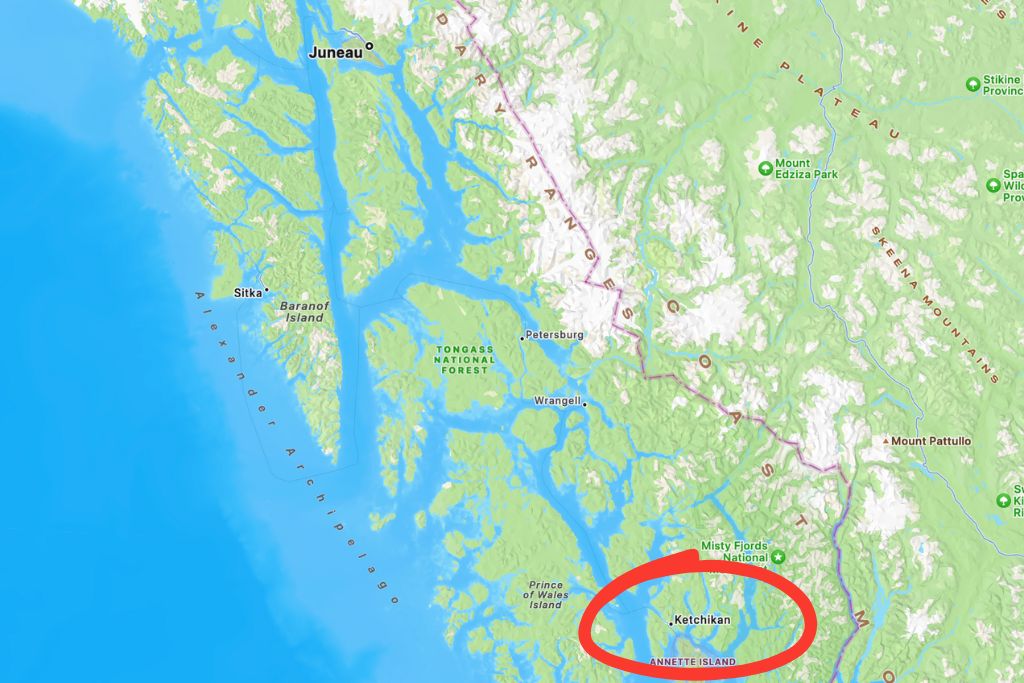
Why is it called Alaska’s First City?
The city gained this name by simply being the first city you reach as you travel north up through the Inside Passage. It is the introduction to Alaska for many people.
When is the best time of the year to visit Creek Street in Ketchikan?
The best weather is usually during the late spring and throughout the summer. Temperatures average between the 50s to 60s during the summer, but it can get warmer than that. It was definitely in the high 60s when we visited in early May, so the summer can get a bit warmer.
Also be prepared for rainfall by keeping an umbrella or rain jacket with you. The average rainfall is the lowest during May, June, and July. We were quite lucky and experienced no rainfall while in any port during our 11-day cruise through the Inside Passage.
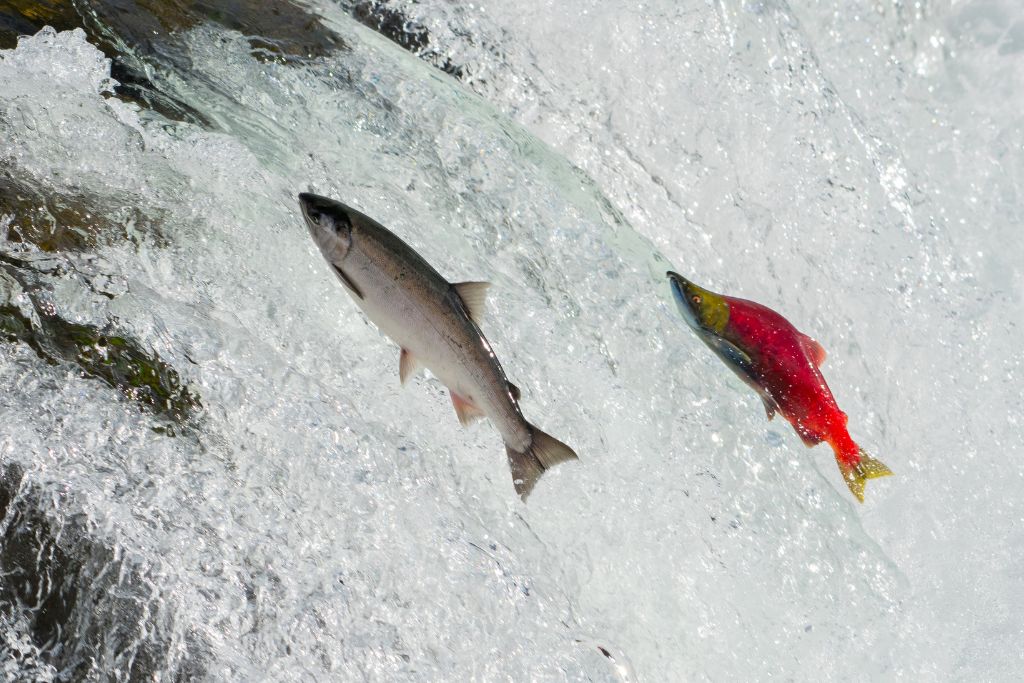
What food is Ketchikan known for?
Being called the “Salmon Capital of the World” means there is plenty of salmon to be enjoyed in Ketchikan. They are also famous for other cold water seafood like halibut and crab. There is nothing better than tasting one of these delicacies right at the source. Make sure to try them when in the city.
Read More About Alaskan Cruise Destinations
21 Unique Things to Do in Icy Strait Point Alaska
13 Amazing Things to Do in Sitka Alaska in Just One Day
21 Fun Things to Do in Skagway Alaska
Keeping Glacier Bay National Park Protected
In Conclusion: Make Sure to Visit Creek Street in Ketchikan
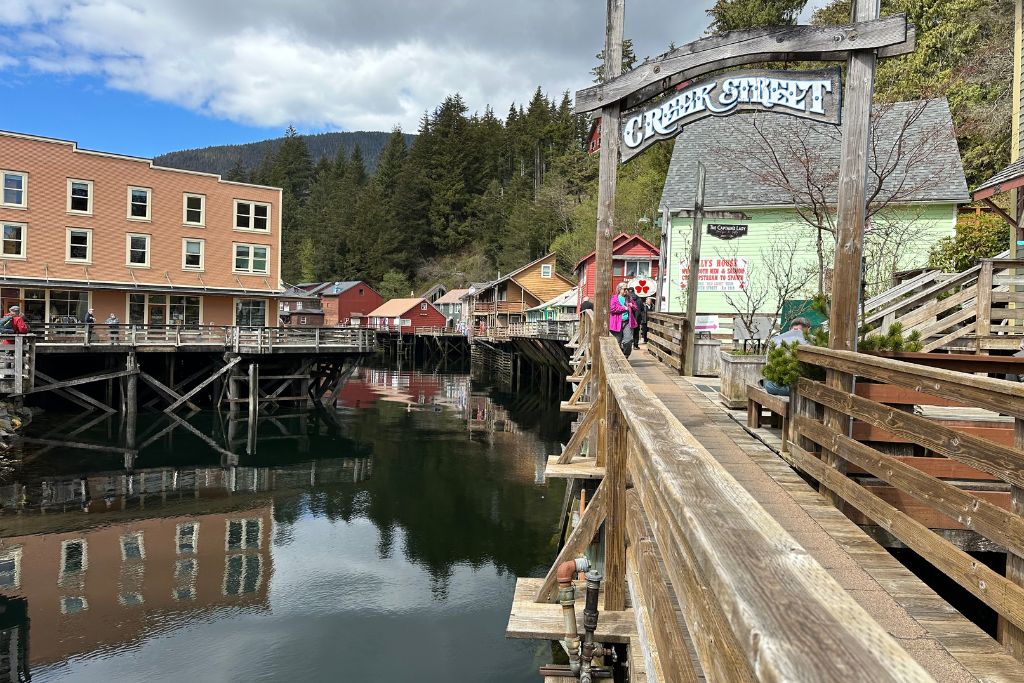
As an introduction to the magnificence of Alaska, Ketchikan is an excellent first taste of the beauty yet to come. Stroll over from your cruise ship, or travel by one of the other means to get here, but make sure to check out Creek Street in Ketchikan. The strength of the women who chose to migrate north helped shape the city. Visit where they lived and worked perched high above the Ketchikan Creek. And if you time it right, you might even spot a salmon.

